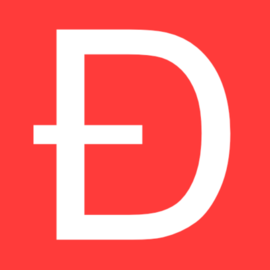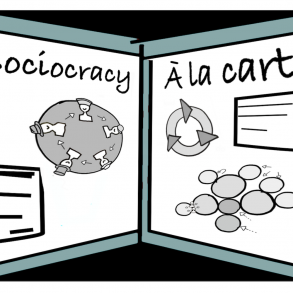By Dennis Wittrock and originally published at Medium.com
This is Part 1 of a three-part article.. Click on the topic/tag below, Decentralized Autonomous Organization, to see other articles on this topic.
How Decentralized Autonomous Organizations can benefit from operating as a For-Purpose Enterprise™ (FPE)
PART 1: The Emergence of Decentralized Autonomous Organizations
Imagine an organization in the cloud, radically decentralized, without bosses. Its rules are written in code, so-called “smart contracts” and enforced automatically, secured by cutting-edge distributed ledger technology — aka the blockchain.
Its participants flock around it from all over the world, launch proposals for what projects to work on, and share the spoils in the form of cryptocurrency tokens, distributed via smart contract after successful completion of the deliverable.
This alien creature is called a DAO — a decentralized autonomous organization — and it is a hungry beast. Since its first major emergence in 2016 it has captured the imagination of thousands of people worldwide — mainly software developers — who devote their time, energy, and skill to various DAOs, often crypto projects, such as MakerDao that revolutionize and disrupt the finance industry and created the field of DeFi — decentralized finance. Anyone with an internet connection and the necessary skill can join in and contribute to and earn in these new organizations.
Blockchain technology dramatically eases coordination and collaboration between strangers, since the economic actions are executed by software code in a ‘trustless’ manner. There is a high degree of transparency and auditability since anyone can check the records on the distributed ledger, which is highly tamper-proof due to it being stored on decentralized nodes of a network instead of centralized on a single server.

Logo of “The DAO”
It is an exciting time for pioneers, but it can be very messy as well, as evidenced in the major hack of “The DAO”- the first noteworthy instantiation of this new form of organization. A hacker had found a way to exploit a bug in the code and siphoned off the equivalent of 70 million dollars. This forced the Ethereum developer community (the number two cryptocurrency after Bitcoin) to make a hard fork, leaving the old fork, Ethereum Classic, behind to rewrite and fix the code.
Challenges that DAOs are struggling with
Apart from Black Swan events like the one above there are more mundane challenges that DAOs haven’t quite solved yet. In an article for Decrypt, Matt Hussey and Adriana Hamacher summarize the main challenges as follows:
🏢 Flat structure — by not having a clear authority figure, or chain of command, decentralized organizations are slower to operate as decisions take longer to make.
😡 Disagreements — when the community disagrees strongly, it could split the organization into two.
👸🏽 No change — in some DAOs, those with the most tokens call the shots, so governance looks very similar to traditional organizations.
⚖️ Legality — minefields abound in relation to token projects that might be deemed to be securities.
The Governance Myopia of DAOs
DAO Consultant Grace Rachmany identifies several problems related to governance and decision-making in DAOs. Usually, there’s only one (crude) pathway offered for making all decisions: token voting by all the users that hold governance tokens in the DAO. But majority decisions are rarely the best way to make decisions. Who gets to define the problem to be voted upon? Who gets to frame the voting options? What if you can only choose between bad proposals?
Beyond that, she points out that winner-takes-all voting quickly devolves into exacerbating our already dominant competitive tendencies, thereby weakening the spirit of cooperation. It turns out that even a highly skilled and intelligent crowd of software engineers mainly work with default assumptions about how to do governance (majority vote, vote weight based on token share size) that prove to be too unsophisticated for running a complex multi-million dollar operation with thousands of decisions to be made.
The Unclear Legal Status of DAOs
As we saw, many DAOs are used to launch crypto projects. Developers that put in their time and work can earn tokens of that project as a way of payment. Should the price of the token skyrocket later, this could be a massive opportunity for the developer. For those not familiar with the difference between the terms “cryptocurrency” and “tokens”, here’s a definition by Sheba Karamat, which I found helpful:
“While a cryptocurrency operates independently and uses its own platform, a token is merely a cryptocurrency built on top of another pre-existing blockchain. All tokens are cryptos, but not all cryptos are tokens.” (Coinrivet.com)
As the Decrypt article quoted above states, token projects might be deemed to be securities by state regulators. Securities are usually highly regulated. Currently, there are a lot of legal grey areas in the crypto-space, but with trade volumes and market capitalization steadily increasing year by year, the players in the industry increasingly fear an impending government crackdown. Regulators demand formal legal structures, especially in the Decentralized Exchange or “DEX” space.
Without formal legal standing, DAOs are at risk of being labeled a default partnership with potential liability implications for all of its members. As everyone knows, two things in life are certain: death and taxes. If there are huge flows of monetary value involved, the state will sooner or later knock on the DAO’s doors — or knock them down.
Read Part 2 of this article here.
Republished with permission.
Featured Image and some paragraph spacing added by Enlivening Edge Magazine. Image under Pixabay Licence




